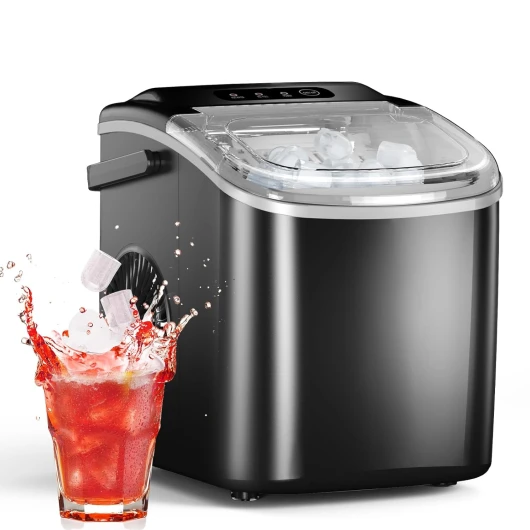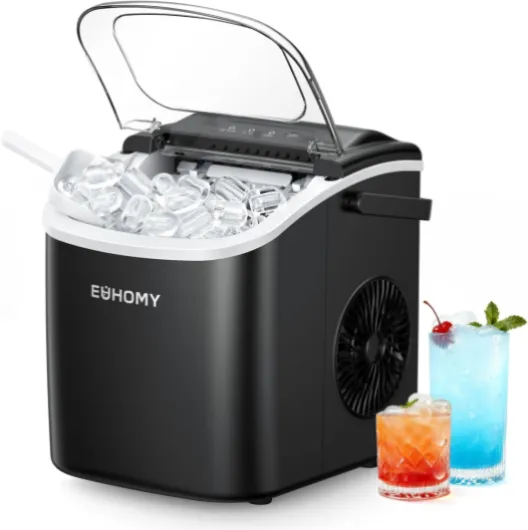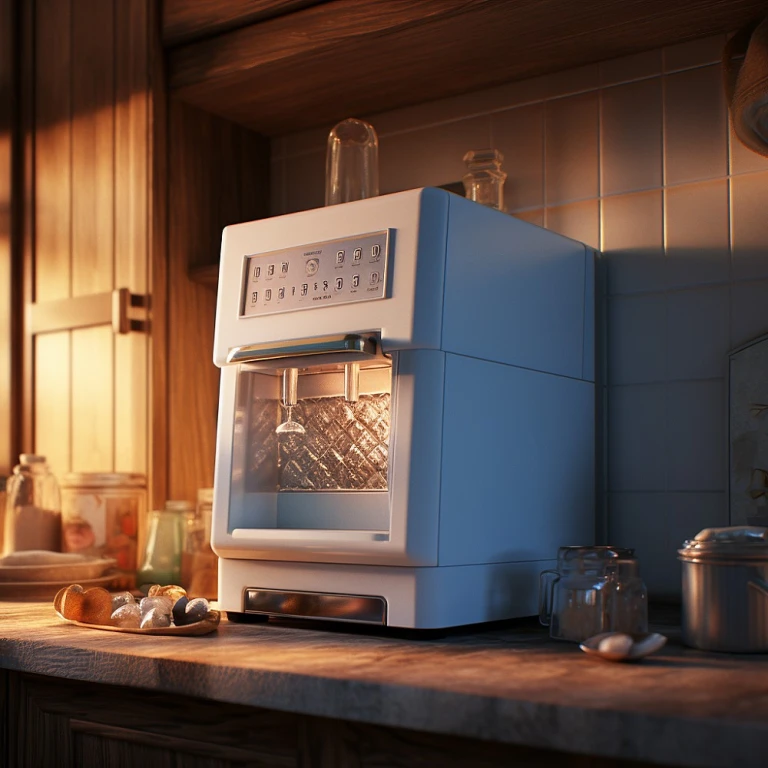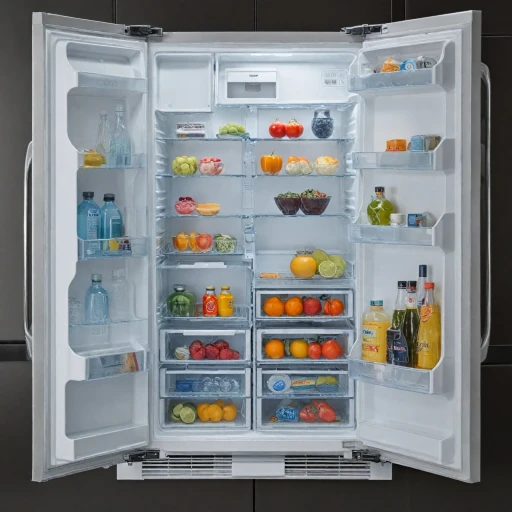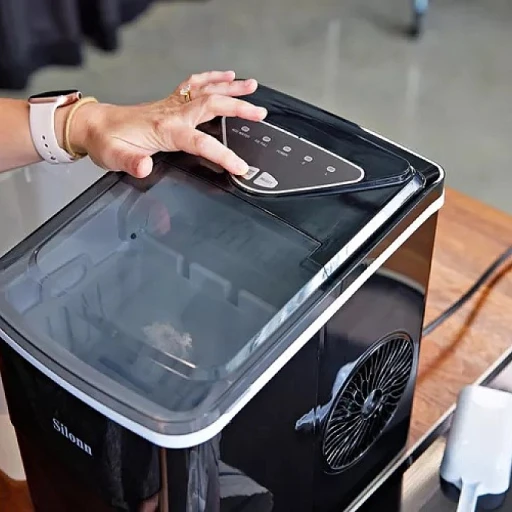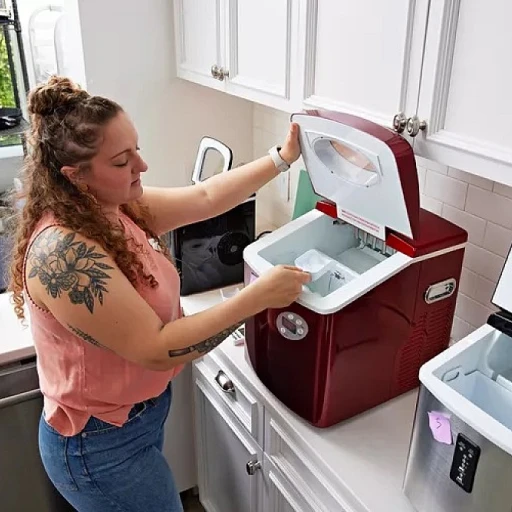
The Basics of Ice Maker Production
Understanding Ice Maker Essentials
When it comes to leveraging your ice maker's full potential, understanding the basics of ice maker production is key. Whether you're considering countertop ice cube machines or industrial scale models, the fundamentals remain the same: producing high-quality ice quickly and efficiently is always the goal.
For many buyers, prioritizing size and production rate is crucial, especially if they aren’t familiar with the benefits of bulk ice production. The type of ice produced—be it crushed, cubed, or nugget—also makes a significant difference in functionality and utility. These are considerations that define how well an ice maker meets your particular needs.
To ensure consistent performance, the type of cooling system used in your ice maker plays an essential role. Most domestic models utilize air-cooled systems, whereas more demanding environments might require a water-cooled approach. Understanding these systems leads directly into other key factors about the mechanics of ice makers, which are explored further in different parts of our guide.
Moreover, water quality and filtration systems influence not only the longevity of your machine but also the quality of the ice produced. Investing in a good filtration system can be the difference between cloudy, short-lived ice and crystal clear cubes that elevate your beverages.
With technological advancements and improved efficiency being continually integrated into ice maker designs, the basics you understand today might evolve tomorrow. Staying informed about innovations and keeping abreast of industry trends will help you make the most out of your ice maker investments.
Key Components in Ice Maker Manufacturing
Understanding the Heart of an Ice Maker
To maximize an ice maker’s production, it’s essential to delve into the critical components that make these machines tick. Understanding these elements not only highlights the intricate engineering but also underscores how they collectively contribute to efficient ice production.
At the core, ice makers are sophisticated appliances that integrate several key components. Each plays a pivotal role, from water supply mechanisms to advanced refrigeration systems.
- Compressor: As a primary engine, the compressor pressurizes the refrigerant and circulates it through the system, ensuring that the ice maker maintains the low temperatures required for ice formation.
- Evaporator: This component is integral to ice production as it provides a cold surface where ice actually forms. It carefully freezes water into the desired shape and size.
- Water Pump: An essential part that ensures a constant supply of water flows over the evaporator, facilitating the ice-making process.
- Control Module: This technological hub monitors and regulates the ice-making process, optimizing performance and efficiency.
Tapping into these components with the right maintenance and management can significantly enhance production. If you’re curious about crafting the perfect ice texture beyond standard cubes, consider our ultimate guide to soft ice, which explores how different settings affect ice quality. Understanding these dynamics equips owners to make the most of their ice machines, paving the way for efficient and effective ice production.
Challenges in Ice Maker Production
Overcoming Obstacles in Ice Maker Manufacturing
Navigating the complexities of ice maker production requires an understanding of various challenges that manufacturers face. The industry is tasked with creating highly efficient and reliable appliances while keeping up with evolving consumer demands. Let's explore these obstacles:- Efficiency Demands: Energy efficiency is paramount in today’s eco-conscious market. Manufacturers must balance the need for energy conservation with the delivery of effective ice-making capabilities. This often involves innovative design and engineering solutions.
- Component Quality: Ensuring the longevity and reliability of ice makers depends significantly on the quality of individual components. Manufacturers face difficulties in maintaining consistent quality across all parts, requiring extensive quality control measures.
- Technological Integration: The incorporation of advanced technologies like smart sensors and connectivity features can complicate the production process. These additions must be seamlessly integrated without compromising the core functionality of ice makers.
- Regulatory Compliance: Adhering to health and safety standards is non-negotiable. Manufacturers must navigate a complex landscape of regulations, impacting both the design and production processes.
Innovations in Ice Maker Technology
Revolutionizing Ice Making: Cutting-Edge Technological Advances
In the world of ice makers, technology has been a driving force behind increased production capabilities and improved efficiency. Incorporating the latest innovations not only enhances the performance but also addresses some of the common challenges previously discussed.
One pivotal advancement has been the introduction of smart technology. Modern ice makers are now equipped with sensors that optimize ice production by monitoring environmental conditions. These sensors adjust operations in real-time to maintain ideal temperatures, ensuring consistent ice quality and minimizing energy consumption.
Energy efficiency is another focus area in recent innovations. Manufacturers are utilizing eco-friendly refrigerants and improving insulation materials to reduce energy use significantly. This not only reduces operational costs but also aligns with global sustainability efforts, an essential consideration for both residential and commercial users.
Moreover, advanced filtration systems are being integrated into ice makers to enhance ice purity. These systems filter out impurities and contaminants from water, resulting in clearer, better-tasting ice. This is particularly beneficial for hospitality industries where ice quality directly impacts customer experience.
Recent advancements have also tackled noise reduction, making ice machines more suitable for a range of business environments, including open-plan hospitality settings where customer comfort is paramount. This quiet operation is achieved through innovations in compressor technology and optimized mechanical components.
As technology continues to evolve, the future of ice maker manufacturing is set on a path of sustainability and enhanced user experience, ensuring that ice production can meet growing demands efficiently.
Quality Control in Ice Maker Production
Ensuring Excellence in Every Batch
Quality control is a critical factor in ice maker manufacturing, ensuring that each unit operates efficiently and meets consumer expectations. Several strategies are employed to maintain high standards throughout the production process.- Regular Testing: Ice makers undergo rigorous testing to assess their performance under different conditions. This process involves evaluating their ability to produce the right quantity and size of ice consistently.
- Inspection of Key Components: As outlined earlier, components like the compressor and condenser are vital to an ice maker's functionality. Thorough inspections of these parts help identify potential faults that could affect performance.
- Materials Assessment: The quality of materials used in manufacturing, such as stainless steel and insulation, is carefully checked to ensure durability and efficiency. High-quality materials contribute to better insulation and energy-efficient production.
- Feedback and Continuous Improvement: Incorporating consumer feedback is essential for refining the production process. Manufacturers often analyze feedback to identify recurring issues that could be mitigated in future models.
Future Trends in Ice Maker Manufacturing
Emerging Trends in Ice Maker Technology
The ice maker industry is evolving rapidly, driven by technological advancements and environmental considerations. As we look to the future, several trends are shaping the landscape of ice production.
Energy Efficiency and Sustainability
With global warming concerns, energy-efficient ice machines are becoming a priority. Manufacturers are focusing on Energy Star rated models that reduce energy consumption without compromising ice production. These machines utilize advanced refrigerants and efficient compressors to minimize environmental impact.
Smart Technology Integration
Smart technology is making its way into commercial ice makers. Features like remote monitoring and control via mobile apps allow users to manage ice production and machine diagnostics from anywhere. This integration helps in optimizing the ice making cycle and ensuring timely maintenance.
Innovative Ice Types
The demand for unique ice types, such as nugget ice and flake ice, is on the rise. These types offer different textures and melting rates, catering to specific consumer preferences and commercial needs. Ice makers are being designed to produce a variety of ice forms efficiently.
Enhanced Ice Storage Solutions
Future ice makers are expected to feature improved ice storage solutions. Innovations in ice bin design and materials will enhance ice preservation, ensuring that ice remains fresh and hygienic for longer periods. This is particularly important for commercial ice machines where large volumes are stored.
Water Efficiency and Recycling
Water conservation is another critical focus. Advanced ice makers are incorporating water recycling systems to minimize waste. These systems reuse water from the melting ice, reducing the overall water consumption of the machine.
As these trends continue to develop, the ice maker industry is poised to deliver more efficient, sustainable, and versatile solutions for both commercial and residential users.
-logo-retina.jpg)
